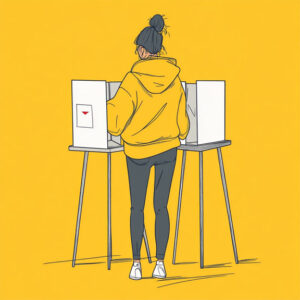 This essay continues my guide on how to start a War on X. In the previous essay, I looked at the advantages and disadvantages of lying and this essay will focus on using hyperbole and the Straw Man fallacy. Hyperbole is a rhetorical device involving exaggeration, typically to make something appear far worse or much better than it really is. While hyperbole is a form of lying, it is an exaggeration rather than a complete fabrication. For example, if a person does not catch any fish and say they “caught a whopper”, then they are just lying. If they caught a small fish and called it a whopper, they are using hyperbole. While there can be debate about the boundary between hyperbole and other forms of lying, this distinction is not as important as the distinction between the truth and a lie. Hyperbole can be used for benign purposes, such as in comedy. But it can also be weaponized to help start a war. Hyperbole is often used in creating a straw man fallacy.
This essay continues my guide on how to start a War on X. In the previous essay, I looked at the advantages and disadvantages of lying and this essay will focus on using hyperbole and the Straw Man fallacy. Hyperbole is a rhetorical device involving exaggeration, typically to make something appear far worse or much better than it really is. While hyperbole is a form of lying, it is an exaggeration rather than a complete fabrication. For example, if a person does not catch any fish and say they “caught a whopper”, then they are just lying. If they caught a small fish and called it a whopper, they are using hyperbole. While there can be debate about the boundary between hyperbole and other forms of lying, this distinction is not as important as the distinction between the truth and a lie. Hyperbole can be used for benign purposes, such as in comedy. But it can also be weaponized to help start a war. Hyperbole is often used in creating a straw man fallacy.
The Straw Man fallacy is committed when one ignores a claim or argument and substitutes a distorted, exaggerated, or misrepresented version of that claim or argument. This sort of “reasoning” has the following pattern:
Premise 1: Person A makes claim or argument X.
Premise 2: Person B presents Y (which is a distorted version of X).
Premise 3: Person B attacks Y.
Conclusion: Therefore, X is false/incorrect/flawed.
This sort of “reasoning” is fallacious because attacking a distorted version of a claim or argument does not constitute a criticism of the position itself. A Straw Man can be effective because people often do not know the real claim or argument being attacked. The fallacy is especially effective when the straw person matches the audience’s biases or stereotypes, they will feel that the distorted version is the real version and accept it.
While this fallacy is generally aimed at an audience, it can be self-inflicted: a person can unwittingly make a Straw Man out of a claim or argument. This can be done in error (perhaps due to ignorance) or due to the influence of prejudices and biases.
Straw man attacks often make use of an appeal to an unknown fact. This usually involves claiming to know the “real reason” a person or group believes the straw claim or argument. This “reason” is usually presented as a wicked motivation.
The defense against a Straw Man, self-inflicted or not, is to take care to get a person’s claim or argument right. This involves applying the principle of charity and the principle of plausibility.
Following the principle of charity requires interpreting claims in the best possible light and reconstructing arguments to make them as strong as possible. There are three reasons to follow the principle. The first is that doing so is ethical. The second is that doing so avoids committing the straw man fallacy. The third is that the criticism of the best and strongest versions of a claim or argument also addresses the lesser versions.
The principle of charity must be tempered by the principle of plausibility: claims must be interpreted, and arguments reconstructed in a way that matches what is known about the source and in accord with the context. Obviously, if you are using a Straw Man in your war, you will want to ignore these principles. Instead, you will want to be uncharitable and present the worst possible interpretation of your target. This should be tempered by a distorted version of the principle of plausibility: your distortion should be plausible (or at least appealing) to your target audience.
Hyperbole and the Straw Man fallacy have the following advantages:
- The truth is what it is, but hyperbole/straw man allows you to “modify” the truth.
- Engaging an actual claim or argument can be difficult, exaggeration and distortion are easy.
- Hyperbole/straw man allows you to have a grain of truth.
- People tend to be more forgiving of hyperbole/strawman compared to utter fabrications.
- Even if someone does not believe the hype, they can be influenced by it.
If you limit yourself to the truth or what your target really said, you are stuck with what is. If you are trying to create a WOX, reality will probably be of little or no use to you. But you can tailor your hyperbole or straw man to have maximum impact on your audience. You can, for example, make it fit perfectly with what they fear. If your target makes reasonable claims and has a good argument, engaging these would be hard. Exaggeration and distortion make fighting easier. To use the obvious analogy, it is the difference between fighting the person and punching a dummy dressed up like the person. While useful, hyperbole and straw man do have some disadvantages. Since hyperbole/straw man is not a complete fabrication, you have a grain of truth to work with. This allows you a degree of plausible deniability and there is also the fact that people seem more tolerant of exaggeration and distortion compared to complete fabrications. Interestingly, even if people do not “buy the hype” they can be influenced by it—this is something advertisers make use of. You just need to be careful not to over-hype or distort to the point that even your target audience will not buy it.
As with lies, there are some disadvantages to hyperbole/straw man:
- As with lying, hyperbole/strawman can be debunked.
- Most religions and moralities condemn lying, even hyperbole.
- Requires a grain of truth.
The general points I made about lying in the previous essay also apply here to hyperbole/straw man. It is worth noting that hyperbole/straw man does give you a degree of plausible deniability. If you are debunked, you can claim you just got things wrong by accident or were being dramatic. Hyperbole/straw man also decreases the chances that your targets will doubt you. If they do make a cursory check of your distortion, they might think that it is confirmed by the grain of truth it is built on. As such, hyperbole/straw man can be better than outright fabrication, at least in some contexts. It does, after all, require at least a fragment of truth.
As an example, consider the change from “Christmas Break” to “Winter Break” or “Holiday Break” by many schools. This was done for the obvious reason that not all students, faculty and staff are Christians who celebrate Christmas. There is also the fact that the break includes holidays other than Christmas, such as New Year’s and that it includes days before and after Christmas. While this change was obviously not an attack on Christmas, it can easily be made into a straw man. A good way to do this is to claim that the “real reason” that the name was changed was because “they” are attacking Christmas and want to cancel it. You can also throw in some claims about “the libs” and “the woke mob” attacking Christianity. If you want to do some racism or sexism, there is also the option of using a dog whistle (the subject of the final essay in this series). In the next essay we will look at how to use Incomplete Evidence to start the war.

 Following our good dead friend Aristotle, democracy is rule of the people (demos). Once a democratic form of government is chosen, then there is the matter of sorting out which people will do the ruling and how they will be selected. In the United States (which is technically a republic) a practical issue of democracy is determining who gets to vote. Those familiar with United States history know that the categories of people who can vote has grown and shrunk over time.
Following our good dead friend Aristotle, democracy is rule of the people (demos). Once a democratic form of government is chosen, then there is the matter of sorting out which people will do the ruling and how they will be selected. In the United States (which is technically a republic) a practical issue of democracy is determining who gets to vote. Those familiar with United States history know that the categories of people who can vote has grown and shrunk over time. In my previous essay I introduced the notion of using the notion of essential properties to address the question of whether James Bond must be a white man. I ran through this rather quickly and want to expand on it here.
In my previous essay I introduced the notion of using the notion of essential properties to address the question of whether James Bond must be a white man. I ran through this rather quickly and want to expand on it here. Cancer killed my dad this past May
Cancer killed my dad this past May Since his creation, James Bond has been a white man. Much to the delight of some and to the horror of others,
Since his creation, James Bond has been a white man. Much to the delight of some and to the horror of others, In philosophy, the classic problem of universals is determining in virtue of what (If anything) a particular individual is a member of a category. Some philosophers, such as
In philosophy, the classic problem of universals is determining in virtue of what (If anything) a particular individual is a member of a category. Some philosophers, such as  When the left proposes to provide new and expanded benefits to non-rich Americans, the right replies with two stock arguments. The first is the deficit argument, which I addressed in my previous essay. The second is the Dependency argument.
When the left proposes to provide new and expanded benefits to non-rich Americans, the right replies with two stock arguments. The first is the deficit argument, which I addressed in my previous essay. The second is the Dependency argument. While this will not surprise anyone familiar with the state of police accountability in the United States,
While this will not surprise anyone familiar with the state of police accountability in the United States, The American right is partially defined by its embracing debunked conspiracy theories such as the big lie about the 2020 election and those involving all things
The American right is partially defined by its embracing debunked conspiracy theories such as the big lie about the 2020 election and those involving all things